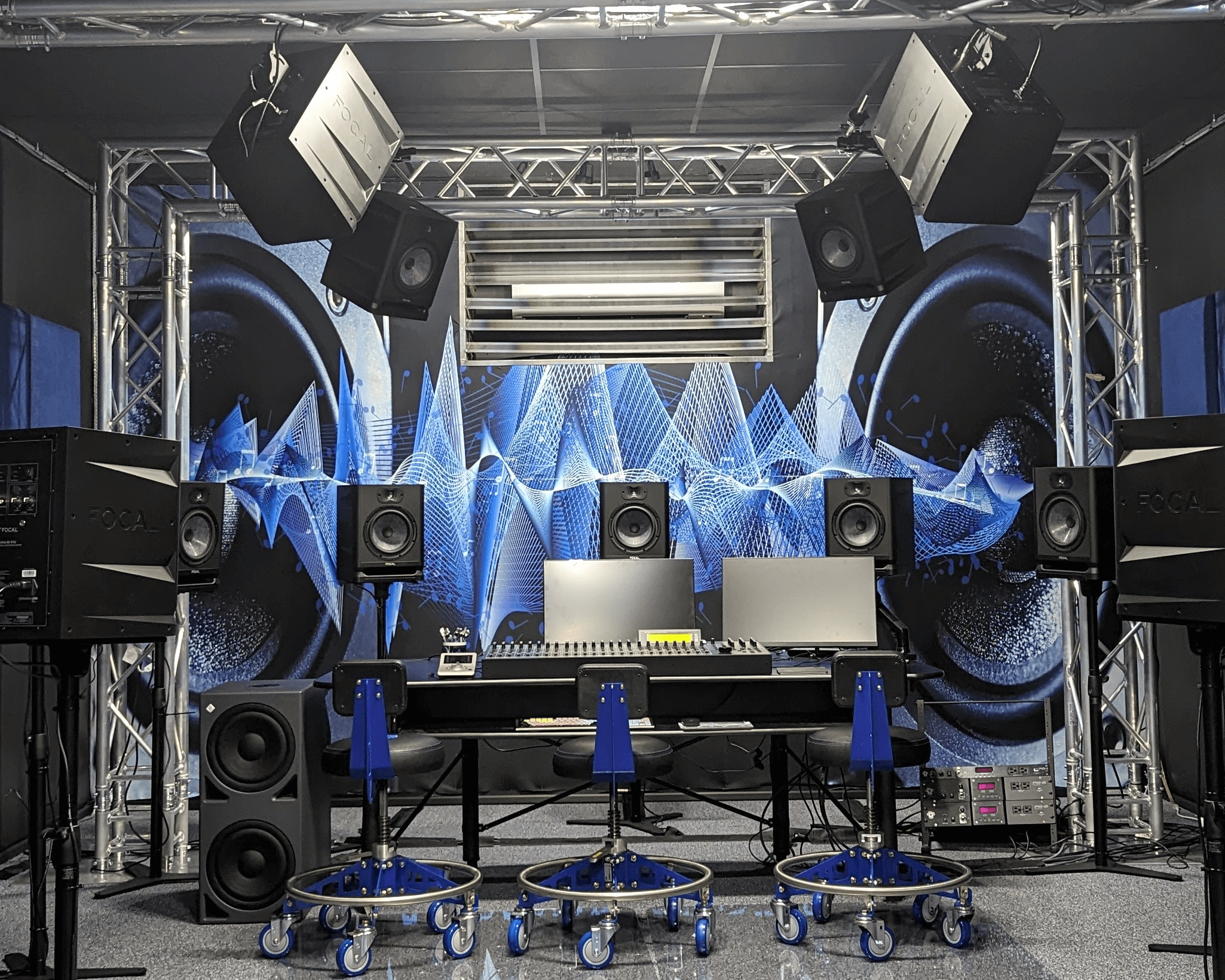7 Reasons to Choose a Dolby Atmos Studio: Your Next Project
Choosing the proper studio is a key decision when stepping into the realm of professional recording. In recent times, Dolby Atmos Studios have emerged as innovators, delivering immersive sound experiences that were previously unheard of. But what exactly makes them so unique for your next recording project? Let's delve into the captivating world of immersive sound that a Dolby Atmos Studio can bring to your project.
1. Immersive Soundscapes
Dolby Atmos Mixing Studios allows sound to be precisely placed and moved in three-dimensional space, creating an immersive soundscape that envelops listeners. This capability sets a new standard for audio quality, making recordings more dynamic and engaging.
Imagine being able to transport your audience directly into the auditory world you're creating. With Dolby Atmos, the listener hears and feels every sound, creating a presence that envelops and moves around the listener. Whether it's the intricate layers of a symphony or the subtle undertones of a singer's voice, this technology allows for a fuller, richer experience. Artists can capture the essence of live performances or create entirely new sound environments. By integrating this immersion level, creators push traditional soundscapes' boundaries into new territories, offering engaging auditory experiences.
2. Cinematic Quality for Music
Initially designed for cinema, Dolby Atmos brings the same high-quality, multi-dimensional sound capabilities to music production. Your tracks can possess the same depth and clarity expected from blockbuster films, enhancing the listener's experience.
Consider the transformative impact a movie soundtrack can have on the action or emotion, making it as tangible as the visuals themselves. Now, imagine applying that same impact to music. With Dolby Atmos, each piece of music becomes a cinematic experience in its own right, with layers of sound that move and rise with the music's tempo and tone. This technological leap extends beyond traditional sound, giving musicians a broadened scope. The result is a more vivid and emotionally powerful product that resonates deeply with audiences, drawing them into the musical narrative.
Incorporating Dolby Atmos into music production isn't just about adding depth to tracks but redefining the listener's connection to music. This capability elevates musical artistry by transforming sound into a sensory, almost visual experience, where each track is its cinematic moment that captivates and holds listeners in place. Whether in studios or headphones, this level of engagement is a powerful tool for creators, offering listeners a new way to connect with music on an emotional level that makes revisiting tracks an enriching experience.
3. Innovative Sound Design
With Dolby Atmos, artists and producers can explore new creative possibilities in sound design. The technology supports a more experimental approach, allowing sounds to travel fluidly and surround the listener like never before.
Sound design in Dolby Atmos Studios isn't just about hearing sound differently; it's about reimagining how sounds can interact in space. This newfound freedom allows producers to craft compositions that mirror real-world audio dynamics or venture into fantastical aural narratives that break conventional boundaries. By transforming how hearing sound is spatially in the room, artists can reposition audio elements to tell compelling stories, convey profound emotions, or think outside the usual production tenets.
4. Future-Proof Your Recordings
As audio consumption moves towards immersive experiences, having recordings in Dolby Atmos format ensures your projects remain relevant and compatible with future playback technologies.
In a world where technology rapidly evolves, standing at the forefront can set a significant competitive edge. Dolby Atmos enhances the present auditory experience and prepares recordings for a future where spatial audio 360 immersive mixing is standard. This future-readiness means that artists and producers can confidently invest in Atmos, knowing their work will maintain relevancy and compatibility with emerging playback systems. By recording in Dolby Atmos, you ensure that your projects are positioned within future sound consumption trends, increasing their shelf-life and expanding their potential reach.
5. Enhanced Listener Engagement
Listening to music in Dolby Atmos can create a more engaging and memorable experience, which can increase listener retention and fan engagement for artists.
6. Superior Mixing Capabilities
Dolby Atmos Studios provides state-of-the-art mixing capabilities, enabling sound engineers to craft intricate, top-quality mixes that stand out in any auditory setting.
The intricacies of mixing in a Dolby Atmos Studio go beyond traditional methods by allowing engineers to weave elements with unprecedented detail and clarity. This capability results in nuanced mixes where each sound is defined and appropriately situated within the audio canvas. Engineers can sculpt auditory experiences that are as complex or simple as desired but with fidelity, ensuring clarity across all listening contexts. By leveraging this technology, the potential for showcasing sonic artistry becomes boundless, manifesting in final products that captivate and intrigue, setting their creators apart from the pack.
7. Stand Out in the Market
By producing music in Dolby Atmos, artists and producers can differentiate themselves in a crowded market, offering something unique that resonates with audiophiles and casual listeners.
The music market is as vast as it is competitive, and ensuring that your recordings capture and maintain listener interest can be challenging. Dolby Atmos provides a distinctive edge by offering an auditory experience that few others can. For artists and producers looking to make a statement, Atmos delivers a multi-layered dimension to tracks that captivate audiophiles and enhance the listening pleasure for casual audiences alike. With this enhanced experience, artists can better communicate their creative intent, building stronger connections with their audience and setting themselves uniquely apart in the industry.

